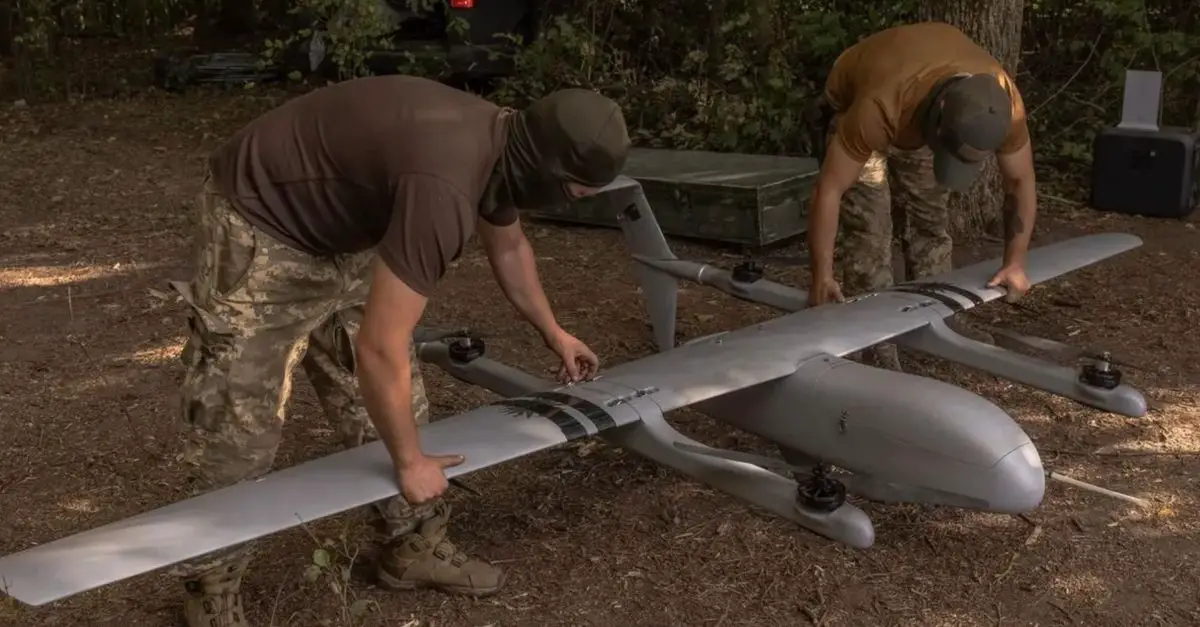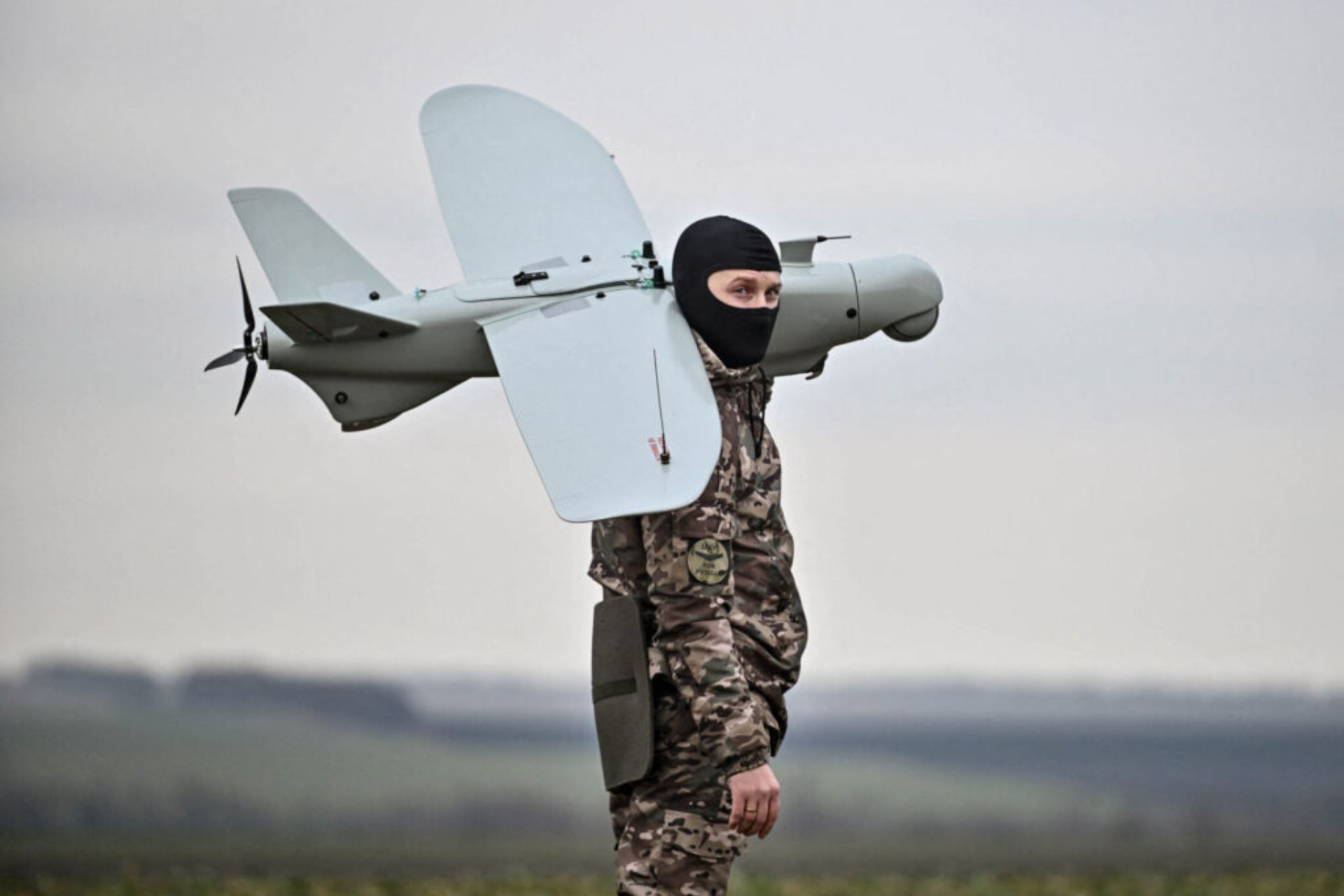Breaking News
Situation brief | Ukraine Is Now Dominating Drone And Electronic Warfare Domains.
During their first invasion of Crimea in 2014, Russian military forces skillfully integrated drones and electronic warfare technologies into their operations. Their electronic warfare systems caused chaos in Ukrainian communication networks and helped locate Ukrainian units. Drones would then fly over Ukrainian positions and target them. This tactic proved highly effective, pushing many armies to adapt their technologies and strategies. At the time, Russia was a leader in military drones and electronic warfare technology, particularly at the tactical level. However, over the thirty months following the launch of its full-scale invasion of Ukraine, Russia lost its edge in these technical areas.
Follow Army Recognition on Google News at this link

Ukrainian military drone operators of the 22nd Mechanized Brigade assemble a Poseidon reconnaissance unmanned aerial vehicle in the Sumy region, near the border with Russia, on August 11, 2024 (Picture source: Roman PILIPEY )
Ukraine has become a global leader in these fields, as its defense industries develop increasingly advanced systems for its fighters. Indeed, Russian and Ukrainian industrial bases are competing to innovate, develop, and deploy better technologies that can give their soldiers an advantage on the battlefield. This has been particularly true for drones and electronic warfare systems, as these two technological areas have rapidly evolved during the war. In the ensuing game of cat and mouse, Ukraine has been able to outpace Russia in its development processes, allowing it to more quickly deploy advanced systems and gain an edge in these technical domains.
Recent Ukrainian successes in the Kursk region highlight Ukraine's strengths in these technical areas. When Ukrainian forces enter an area, they use electronic warfare systems to neutralize Russian drones. They then deploy swarms of their own drones to locate and target Russian positions. These strikes are followed by ground forces moving in to secure the area. This process is systematically repeated, enabling the Ukrainians to achieve consistent gains. Meanwhile, Russian forces appear to have no effective response to this tactic.
At the same time, Russian capabilities in these areas have diminished compared to the Ukrainians. At the beginning of the conflict, the Russians employed similar tactics to those used during the 2014 invasion of Crimea. They also expanded their use of loitering munitions, such as the Lancet and Shahed drones. Furthermore, Russia has deployed several electronic warfare systems that have downed a significant number of Ukrainian drones and caused communication issues for Ukraine. While Russian drones and electronic warfare systems remain powerful and effective, they have had less impact on the battlefield as Ukraine has adopted new technologies and tactics.

The remains of the Russian mobile electronic warfare system are displayed at Mykhailivska Square on May 23, 2022 in Kyiv, Ukraine. ( Picture source : Valentyna Polishchuk )
Ukraine's advantage over Russia in these technical areas can be attributed to several factors. A 2014 RAND study highlighted a fundamental problem in Russia's lengthy defense acquisition process. The long delay associated with developing a new system hampers Russia's ability to integrate commercial technological advances. This is particularly critical in areas like drones and electronic warfare, which should leverage cutting-edge commercial advancements in autonomy, artificial intelligence, and data science.
Ukraine, which is bolstering its defense industrial base, is working to strengthen ties between its commercial and defense sectors. Many companies that focused on commercial technologies before the war have redirected their expertise toward developing military equipment. As a result, Ukraine now has more than 200 registered companies producing military drones and 50 companies specializing in electronic warfare systems.
Although it cannot rely on its commercial sector, Russia's defense community possesses deep expertise in these technical areas, having been a pioneer in them. However, it has always struggled with large-scale production. Additionally, much of its manufacturing capacity is focused on foreign military sales of older systems rather than producing cutting-edge equipment for its forces. Before the war, only a limited number of units were equipped with modernized systems, while the majority still relied on outdated equipment dating back to the Soviet era. While concentrating advanced equipment on certain units works well in maneuver-based warfare, as seen during Russia's 2014 Crimea campaign, this strategy is less effective in a war of attrition where Russian forces are spread over a 960-kilometer front.

Ukrainian drone preparing a ISR UAV to monitor Russian position in 2023. ( Picture source: OSINT)
Ukraine also benefits from a steady flow of new systems and technologies provided by its Western allies, further enhancing its development and production capabilities. In contrast, Russia's capabilities have been constrained by commercial embargoes imposed by Western countries following the invasion of Ukraine. Although Russia continues to source essential supplies from China, Iran, and other partners, it still faces significant shortages in many key areas.
Modern wars are won as much in laboratories and factories as on the battlefield. Over the past 30 months, Ukrainian and Russian scientists, along with their international partners, have vied for dominance in drone and electronic warfare technologies, which have proven crucial in the conflict. Although Russia initially held the advantage in these areas, it has since lost its dominance. Conversely, Ukraine's ability to quickly innovate, produce, and deploy large quantities of new technologies has given it the upper hand, allowing it to outpace Russia in these critical areas.


























